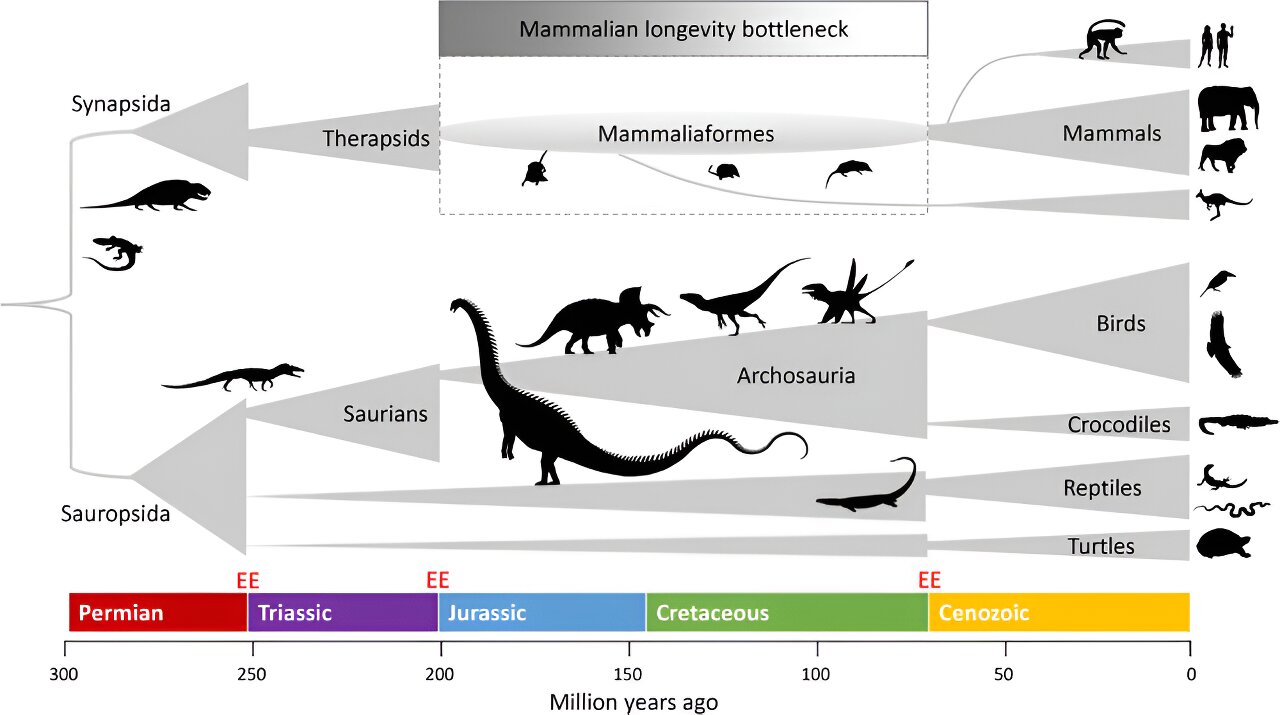Human aging may have been influenced by millions of years of dinosaur domination according to a new theory from a leading aging expert. The ‘longevity bottleneck’ hypothesis has been proposed by Professor Joao Pedro de Magalhaes from the University of Birmingham in a new study published in BioEssays. The hypothesis connects the role that dinosaurs played over 100 million years with the aging process in mammals.
While some reptiles and amphibians show no significant signs of aging, all mammals—including humans—show a marked aging process.
Professor de Magalhaes’ hypothesis suggests that during the Mesozoic Era, mammals faced persistent pressure for rapid reproduction during the reign of dinosaurs, which over 100 million years led to the loss or inactivation of genes associated with long life, such as processes associated with tissue regeneration and DNA repair.
Joao Pedro de Magalhaes, Professor of Molecular Biogerontology at the Institute of Inflammation and Aging at the University of Birmingham, said, “The ‘longevity bottleneck hypothesis’ may shed light on evolutionary forces that have shaped the mammalian aging over millions of years. While humans are among the longest-living animals, there are many reptiles and other animals that have a much slower aging process and show minimal signs of senescence over their lives.”
“Some of the earliest mammals were forced to live towards the bottom of the food chain and have likely spent 100 million years during the age of the dinosaurs evolving to survive through rapid reproduction. That long period of evolutionary pressure has, I propose, an impact on the way that we humans age.”
2023-11-29 19:41:02
Article from phys.org



















